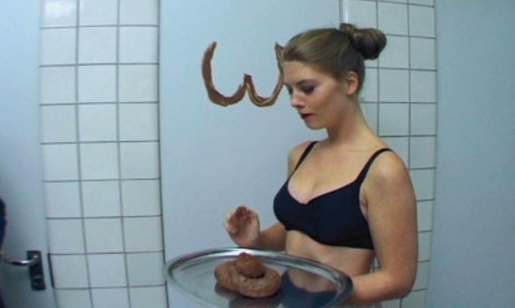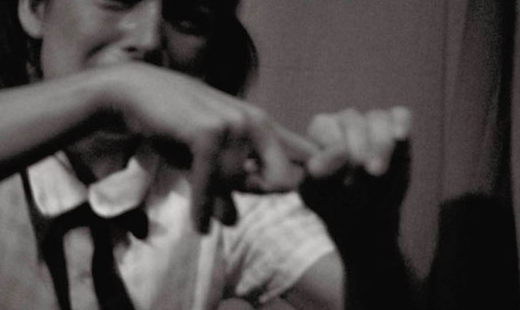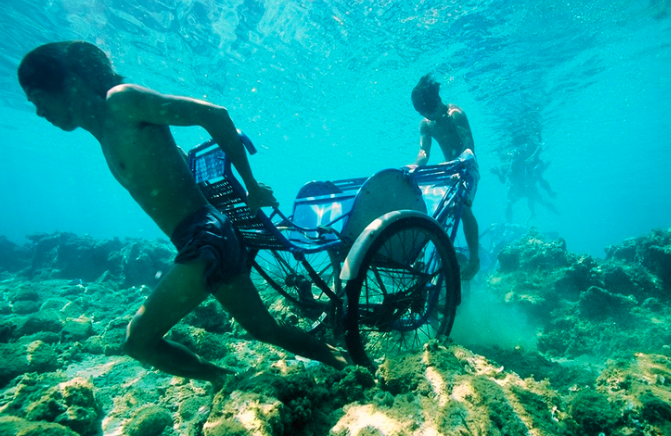Buenos Aires, 1966. Artist and curator graduated from Escuela Nacional de Bellas Artes P. Pueyrredón, BA(1992), Master of Middlesex University (London,2000). Artist in Residence at Gasworks (London,2000), participated in Hwei-Lann Workshop (Taiwan,2003). He received awards including: 2 First Prize, Second Biennial of Printmaking(Colombia,1998), Awards: British Council(1999), FNA(2002), Fundación Antorchas(2003) & Pollock-Krasner(NY, 2004). Curated exhibitions: A finger on the River, CCEBA(BA,2006). Participated in exhibitions such as: Biennial of the End of the World (Ushuaia,2009); Variation Time (Munich, 2009); Alucine Video Festival (Toronto,2009); SAR07 Macro (Rosario, 2007) Levity (NY,2007); ACC Gallerie (Germany,2006), Art and Engagement (Spain,2005), PR04 (Puerto Rico,2004), False Impressions (England, 2003) Contemporary Art Biennial das Americas (Fortress,2004); Contemporáneo1 Malba (BA,2002) Unterwegs nach Timbuktu (Berlin,2002) Solo Exhibition: Gallery-UECLAA Essex (Colchester,2000).
Tamara Stuby
Andrea Fraser
Alessio Antoniolli
[gview file=”http://capacete.org/wp-content/uploads/2018/11/CAPACETE20ANOS-PAGINAS-alessio.pdf”]
…..
Frederikka Hansen
Livro para ler – CAPACETE 10 anos
[gview file=”http://capacete.org/wp-content/uploads/2018/11/livro-para-ler-2010PORT-frederikka.pdf”]
…..
Frederikka Hansen nasceu em 1969 e obteve seu master em história da arte e ciências políticas pela universidade de Aarhus, na Dinamarca. Durante os anos 90 trabalhou como curadora de diferentes projetos em espaços alternativos na Dinamarca e na Alemanha tais como LXX (Aarhus), Galleri Campbells Occasionally (Copenhagen), e o project space frø (Berlin). Em 1997, Hansen deixou a Dinamarca para se estabelecer em Berlim, onde ela iria realizar diferentes projetos locais e internacionais. Mais tarde se mudou para Zurich para trabalhar no espaço kunsthalle Shedhalle, primeiro como curadora (2000-03) e depois como diretora artística (2003-04). No contexto scandianvo, Hansen é conhecida como pioneira em curadorias e textos sobre práticas e politicas feministas.
Teresa Riccardi
CAPACETE 20 anos
…..
livro para ler – CAPACETE 10 anos
[gview file=”http://capacete.org/wp-content/uploads/2002/11/livro-para-ler-2010PORT-teresa-.pdf”]
….
Teresa Riccardi nasceu em Buenos Aires em 1972. Ingressou na faculdade de filosofia e letras da Universidad de Buenos Aires, 1999. Foi bolsista de doutorado ANPCyT (2003-2007) e CONICET (2007-2009). É docente da catedra Introducción al Lenguaje de las Artes Plásticas (FFyL-UBA) desde 2003. É pesquisadora do Instituto de Teoría e Historia del Arte Julio E. Payró (FFyL-UBA) e trabalhou como assistente de direção no Museo de Arte Moderno de Buenos Aires entre 2002 e 2003. Em 2005 publicou, em colaboração com El pez , “la bicicleta y la máquina de escribir” editado pela Fundación Proa. Atualmente trabalha de forma indepndente em projetos curatoriais, em iniciativas editoriais de arte contemporânea, em atividades de extenção universitária e participa no laboratório de pesquisa de práticas artiísticas contemporâneas (LIPAC). Pesquisou arquivos patrimoniais e coleções na Argentina. Atualmente escreve sua tese de doutorado “Cuerpo, escritura y creencia. La construcción del sujeto en las practicas performáticas argentinas contemporáneas” , dirigido pela Dra. Andrea Giunta.
Marie-Ange Guilleminot
Joachim Koester
Seppo Renval
Jun Nguyen-Hatsushiba
Marepe
Michael Kvium


Christian Lemmerz


Stephen Dean
Johan Grimonprez
“In 1979, when he was thirty-nine, Jim Lewis decided to try to find his identical twin brother, from whom he was separated at birth. Six weeks later, Jim Lewis knocked on the door of Jim Springer. The moment they shook hands, they felt close as if they had known each other their whole lives. Not only that, they also learned about an amazing series of coin- cidences in their twindom. To begin with they realized they both were named Jim by their adoptive parents. Both had grown up with adoptive brothers called Larry. Both had married girls named Linda, divorced them and then both married girls named Betty. Both had named their sons James Allan. Both had owned a dog named Toy. Both chain smoked the same make of cigarette. The twins were fascinated, not only in these similarities in experience but by their mental similarities—one would start to say something and the other would finish it.”
Irene Ferraz
Helmut Batista
Andrea Fraser
[gview file=”http://capacete.org/wp-content/uploads/2015/08/CAPACETE20ANOS-PAGINAS-andrea.pdf”]
…..


